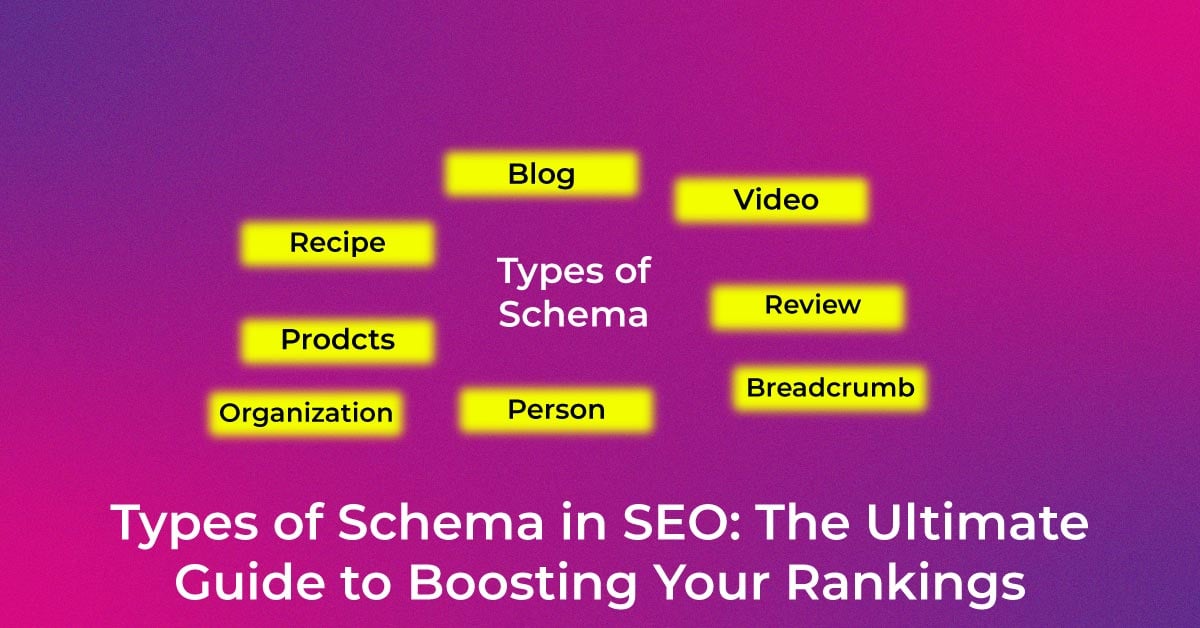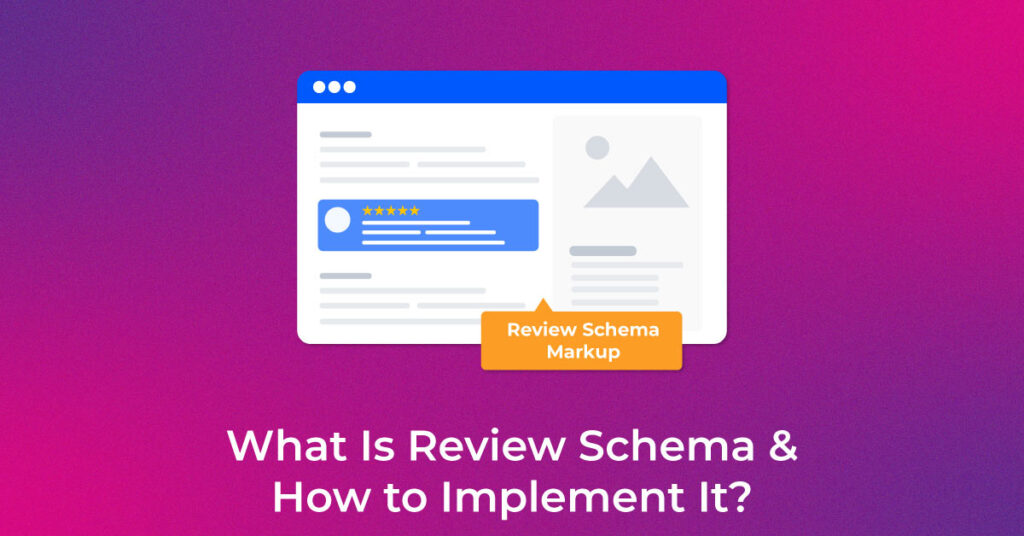Introduction to Review Schema
Nestled within the bustling digital landscape, review schema holds a treasure trove of potential for businesses and entities seeking to shine in search engine results. You’ve likely come across star ratings and review summaries when searching for products or services online. These are visual cues that signal a collective judgment, drawing your interest and helping you make informed decisions. This is the work of review schema, a powerful tool that could elevate your online presence.
Understanding Review Schema Markup
Definition of Review Schema
Review schema is a structured data language that communicates the essence of reviews to search engines in a language they comprehend fluently. Think of it as the nutritional label on your food packaging but for reviews. It’s an explicit part of the Schema.org vocabulary—a collaboration among the giants: Google, Microsoft, Yahoo, and Yandex—that strives to create a unified system for understanding the web’s content. Specifically, review schema enables you to provide precise details about reviews, such as the reviewer’s name, the item being reviewed, the rating awarded, the review’s date, and the review text itself. This allows search engines to parse and present this data effectively, enriching the user experience with insightful preview snippets in search results.
Types of Review Schema
Within the world of structured data, review schema includes a diverse cast of subtypes, each tailored to a particular kind of content. You can find specific schemas designed for books, wherein details such as the ISBN and author shine through, or delve into areas such as films or recipes, each featuring unique attributes like directors or cooking times.
A common subtype is the full Review markup, which encapsulates individual reviews. Here you can chronicle the author’s perspective, the rating, and the nuances of their experience. There’s also the AggregateRating schema, which computes the collective wisdom of many reviews into a single, averaged out star rating, giving you a bird’s-eye view of public opinion.
These specialized schemas extend further to include professional services, products, and even events, each bringing its flavor of details to the table—ensuring whether it’s a five-star blender or an upcoming music festival, the strengths and praises of each are communicated to search enthusiasts.
How Review Schema Enhances Search Results with review snippets
When review schema is aptly woven into your web pages, it holds the power to transform plain search results into captivating snippets that spotlight key information—like a lighthouse guiding ships through the dense fog of online content. By adding a review schema, you make it possible for search engines to showcase rich snippets: these are the search results adorned with stars, review counts, and sometimes even reviewer photos or review excerpts. Imagine the user’s journey as they scan the search results; your enriched snippet is like a beacon promising trustworthy content, thereby increasing the likelihood they’ll visit your website.
Furthermore, rich snippets serve as visual endorsements, broadcasting quality and reliability at a glance. Consequently, not only do users get a preview of what others think of your product or service before clicking, but this also differentiates them from competitors who have yet to harness the power of review schema. By implementing a review schema, you catalyze a more interactive and dynamic search experience, ultimately forging a path for users to follow straight to your virtual door.
Benefits of Implementing Review Schema
Increased Visibility in Search Engines
Implementing a review schema can help you cut through the digital noise and ensure your content not only reaches your audience but also stands out to them. When you tap into the world of structured data with review schema, search engines reward you by enhancing the visibility of your entries. These snippets, with their eye-catching ratings and pertinent details, soar above the standard text entries occupying the search engine results page (SERP).
Imagine someone searching for a new laptop; amid the myriad of options, your click-worthy snippet that includes a high star rating and an impressive number of reviews could decisively tilt the scales in your favor. Not only do these elements catch the eye, but they also signal to the search algorithm that your content is rich in information, making it more likely to take up prime real estate on the SERPS, thus driving more organic traffic your way.
Improved Click-Through Rates (CTR)
One tangible benefit of implementing a review schema is the potential hike in your website’s click-through rates (CTR). Picture this: as users skim through a sea of search results, the five-star ratings, bright golden stars, and persuasive review counts present a narrative of quality and reliability. This not only captures attention, but it also spurs action.
Now, envision yourself in the user’s shoes. Faced with the option to click on a basic result or one underscored by positive community feedback, the choice becomes clear. Thus, by making your page a visual standout, review schema doesn’t just decorate your SERP entry; it makes it more actionable. Statistics have shown that entries with rich snippets can enjoy a significant CTR improvement, which ultimately translates to more traffic and the opportunity for increased engagement and conversions.
Establishing Trust and Credibility
In today’s online ecosystem, trust is the currency of choice, and credibility is the foundation upon which consumer confidence is built. By integrating review schema into your website, you’re not just enhancing your visibility; you’re constructing a bridge of trust with your audience.
Each review and rating woven into the fabric of your web pages acts as a testament to your product’s quality and your brand’s integrity. As potential customers browse your site, seeing authentic feedback from peers can significantly sway their purchasing decisions. You are providing transparency and honesty that, according to studies, nearly 90% of consumers crave before committing to a business. The direct result is a fortified reputation which, in an age where word-of-mouth has transcended to clicks and shares, is absolutely invaluable.
How to Implement Review Schema
Embarking on the journey of implementing review schema can seem daunting, but fret not, for with guidance, it’s a straightforward process that yields significant rewards for your SEO efforts. Whether you have hands-on coding knowledge or you’re more comfortable with user-friendly tools, there’s an approach for you to integrate review schema onto your website seamlessly.
To get started, identify the reviews that deserve this spotlight and ensure they adhere to the guidelines laid out by search engines. Then, you can either manually code the relevant structured data using JSON-LD, Microdata, or RDFa formats, or if you’re using a content management system like WordPress, you can utilize a plugin that handles the heavy lifting for you.
For hand-crafted precision, begin by marking up your reviews using the JSON-LD script, which you’ll insert in the head of your web page. However, if you prefer the convenience of a plugin, options like Schema Pro or WP Review Pro can automate the process, crafting the schema based on your input and embedding it directly into your site.
As you move forward, remember that while deploying review schema on a single page is relatively simple, the process can become complex if you’re working with a vast website or numerous domains. You must apply schema carefully and consistently to maintain its effectiveness across all relevant pages.
Using JSON-LD for Review Schema
When you choose JSON-LD for your review schema, you’re selecting the most recommended format by Google for its ease of use and effectiveness. JSON-LD, which stands for JavaScript Object Notation for Linked Data, enables you to embed a block of script within the head of your HTML, neatly packaging the review details for search engines to digest.
By using JSON-LD, you separate the structured data from the main page content, making it easier to maintain and update when needed. Moreover, this format is highly compatible with dynamic content and is friendly with JavaScript-based sites. You’ll create your JSON-LD structured data script to detail the properties of your reviews such as the @type, author, reviewRating, and more, before placing it in your site’s header.
As you go about implementing JSON-LD, you’ll find an assortment of generators and tools to assist in creating a valid script. Even if you’re not familiar with the nuts and bolts of coding, these generators simplify the process by offering intuitive interfaces where you can input the specifics of your reviews and leave with a copy-paste-ready code block.
With JSON-LD in your toolkit, you stand to make your reviews a clear, structured, and accessible wealth of information, not only for search engines but for the ultimate judge—the user.
Step-by-Step Guide to Adding Review Schema to Your Website
Step 1: Identifying the Reviews to Markup
Before you can harness the power of review schema, you first need to pinpoint which reviews will be your standard-bearers. Aim to highlight reviews that are genuine, substantive, and relevant to the products or services you offer. They should provide insight and value to potential customers scanning your website or encountering your brand in search results.
Evaluate the reviews in question—they should be from verified purchasers or users, providing a balanced perspective. Avoid the temptation to cherry-pick solely five-star ratings; a spectrum of well-articulated reviews can lend authenticity and demonstrate that your brand values customer feedback in all its forms.
Remember, review schema should reflect accurate information. Reviews chosen for markup should be visible on your website so that users can cross-reference the rich snippet information against the actual review content. This transparency is crucial for maintaining credibility with both your audience and search engines.
Step 2: Crafting the JSON-LD Code
Once you have identified which reviews to mark up, crafting the JSON-LD code is your next step. To craft this code correctly:
- Start with a script tag specifying type=”application/ld+json”.
- Use the @context to define the vocabulary (typically, “http://schema.org”).
- Specify the @type as “Review” for individual reviews or “AggregateRating” for summary ratings.
- Populate the required fields like author, datePublished, reviewRating, etc.
- For individual reviews, include the actual review text with the reviewBody tag.
- Incorpore the itemReviewed type to provide details on the reviewed product or service.
Be meticulous with your data entry to avoid syntax errors and ensure all the mandatory fields are properly completed to achieve optimal results. Once your JSON-LD code is formulated, place it within the <head> section of the HTML of your marked-up page.
To aid in this crucial phase, use a JSON-LD generator. This tool typically offers a guided experience where you input the review details into designated fields, and the tool generates the clean, compliant JSON-LD code ready for you to embed.
Step 3: Validating Your Schema Markup
After crafting your JSON-LD code, the prudent next step is validation. Validating your schema markup is akin to proofreading an important email before hitting ‘send’—it ensures the message is clear and free of errors. Using tools like the Schema Markup Validator tool by SiteChecker, you can systematically pinpoint and rectify mistakes within your markup.
Paste your JSON-LD code into the validator which then combs through your script, checking for completeness, accuracy, and adherence to schema.org standards. The result is a detailed report that highlights any issues, such as missing required properties or syntax errors, allowing you to make necessary adjustments. Once your code passes muster, you can confidently proceed to implement it onto your website, secure in the knowledge that search engines will correctly parse and utilize the rich data it conveys.
Step 4: Testing Your Implementation
After successfully validating and incorporating the review schema onto your website, the final crucial phase is testing your implementation. This ensures that everything is in working order and that the schema is performing its duty to make your reviews searchable and comprehensible to search engines.
Google’s Rich Results Test is an invaluable tool here. Through a simple interface, you can either enter the URL of the webpage in question or paste in the code to be tested directly. The tool then simulates how your page might appear in search results, confirming whether the structured data can generate rich results and identifying any issues.
Remember that successful testing is a confirmation of your effort, a green light that your reviews are now ready to stand out in search results and draw the attention they deserve. Make testing an integral part of your SEO routine to continuously reap the benefits of review schema.
Common Mistakes to Avoid with Review Schema
1. Overusing Review Schema
Tempting as it might be to pepper your website with review schema, it’s important to use this tool judiciously. Overusing review schema by implementing it where it’s not appropriate or on content that doesn’t feature genuine reviews could backfire; it goes against search engines’ guidelines, which could result in penalties. Search engines aim to provide users with the most relevant and valuable information, and by misusing schema, you risk eroding the trust both search engines and users have in your site.
Stick to marking up bona fide, individual reviews or aggregate ratings that add substantive value. Avoid using review schema on owner-created content or on pages with no specific product or service being reviewed. By staying within the lanes of ethical and strategic use, you maintain the integrity of your site and ensure that your schema use effectively enhances user experience and SEO.
2. Incorrectly Formatting Markup
When it comes to crafting your schema markup, correct formatting isn’t merely a suggestion—it’s a necessity. Incorrectly formatted markup can make the difference between rich snippets that shine and an absence of any in the search results. Common pitfalls include typos, using the wrong property names, adding information that isn’t visible to users on the page, or structuring your data in a way that search engines can’t understand.
To avert these missteps, familiarize yourself with the schema.org vocabulary, refer to comprehensive guides, or use reputable schema generation tools that help mitigate errors. Remember, each type of review schema has a specific set of required and recommended properties which need to be meticulously filled. If you’re manually coding, pay close attention to detail to preserve the correct hierarchy and syntax.
Validating your markup with tools like Google’s Rich Results Test before taking it live is an essential step that can save you from future headaches. By taking these actions, you ensure that your markup is an asset—not a liability—to your SEO endeavors.
3. Ignoring Schema Validation
Bypassing the step of schema validation is a misstep you’ll want to avoid. By skipping validation, you run the risk of not capitalizing on the full potential of review schema, possibly leading to missed opportunities in enhancing your search engine presence. Validation is essentially your safety net, catching any errors that could prevent search engines from accurately interpreting and displaying your review data as rich snippets.
Utilize schema validation tools to audit your markup before it goes live. This step can uncover issues ranging from minor typos to critical errors that could otherwise lead to warnings or errors in platforms like Google Search Console. By treating schema validation as an indispensable part of your SEO routine, you are taking proactive measures to fortify your structured data’s integrity and functionality.
Addressing errors highlighted during validation will safeguard your hard work from becoming ineffective due to avoidable mistakes. Always invest that extra ounce of effort into validation; it’s an investment that pays dividends in the form of flawless, search engine-friendly review schema.
Tools for Testing and Implementing Review Schema
Google’s Structured Data Testing Tool
While the once-popular Google’s Structured Data Testing Tool has been deprecated in favor of the Rich Results Test, it played a pivotal role in validating the structured data of many websites. The Rich Results Test now stands as its successor, serving as an essential utility in your SEO toolkit. It evaluates your code to ensure compatibility with Google’s search result features, verifying if your page is structured in a way that meets the criteria for rich snippets, including those for reviews.
By entering a URL or copying and pasting code, the Rich Results Test analyzes your review schema and displays any issues that need addressing. This tool is incredibly resourceful not only in spotting errors but also in providing actionable feedback on how to rectify them. It’s an invigorating process that paves the way for your content to earn the spotlight in Google’s search results.
Remember that while this tool focuses on Google’s interpretation of schema, it’s broadly indicative of how well your structured data adheres to established best practices—an invaluable insight as you optimize your online presence.
Schema.org Validator
The Schema.org Validator, previously known as the Schema Markup Validation Tool (SMV), is a vital resource for anyone looking to verify the correctness and efficiency of their review schema. This tool meticulously scrutinizes your markup against schema.org standards, highlighting errors like missing required properties or incorrect item types. To use the validator, simply input the URL of your web page or copy and paste the schema code directly into the tool. It promptly assesses the structure and syntax of your JSON-LD, Microdata, or RDFa formats, and provides feedback necessary for improvements.
This validator acts as your second set of eyes, ensuring that your structured data is primed to perform its best in the wild, delivering rich results that enhance your visibility and user engagement. It’s an essential stop in the implementation process, one that can shape the success of your SEO strategy.
Conclusion
Embarking on the journey to implement review schema is a testament to your commitment to excellence within your digital landscape. By effectively applying review schema, you’re setting your content apart, making it more accessible and engaging for both search engines and potential customers. Increased visibility, improved CTR, and the establishment of trust and credibility are just a few of the rewards that await the diligent application of this structured data.
Remember that with the right tools and a methodical approach to crafting, validating, and testing your review schema, you can tap into its vast potential. Aim to avoid common pitfalls such as overuse, incorrect formatting, and ignoring the importance of validation to ensure your efforts bear fruit.
As technology and search algorithms continue to evolve, staying abreast of best practices in schema implementation will be key to maintaining and enhancing your online presence. So, wield the power of review schema wisely, and watch as it becomes a beacon that guides users to the unique value only you can offer.
Popular Searches
How useful was this post?
5 / 5. 2

















